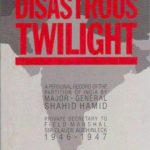Mirza Kashif Baig
In the ongoing evolution of global security frameworks, Russia has introduced a provocative new doctrine that reshapes the contours of its nuclear deterrence policy. This doctrine asserts that an attack on Russia by a non-nuclear weapon state aided by a nuclear power will elicit a nuclear response against the aiding nuclear power. The announcement underscores the complexities of modern warfare and signals a recalibration of strategic deterrence in a multipolar world.
Context of the doctrine
The backdrop of this doctrinal shift is the protracted Russia-Ukraine war, which has transformed from a conventional conflict into a theater of geopolitical competition. Western nations, led by the United States, have provided extensive military and logistical support to Ukraine, raising concerns in Moscow about the involvement of nuclear-armed states in a proxy war.
Russia’s leadership has frequently pointed to the risks of escalation posed by advanced weaponry, intelligence sharing, and training programs provided to Ukraine. This doctrine is a direct response to perceived threats emanating from these activities. By expanding the conditions under which nuclear weapons might be used, Russia seeks to establish a deterrent against any state contemplating direct or indirect engagement against its national security.
Key implications of the doctrine
The doctrine’s implications are profound and multifaceted, affecting global security, alliances, and the norms surrounding nuclear deterrence:
- Redefining Deterrence:
Traditionally, nuclear powers have adhered to the principle of deterrence to prevent attacks on their sovereign territory. This doctrine shifts the focus to indirect threats, clarifying that even indirect support to a conventional conflict could trigger a nuclear response. This broadens the scope of nuclear deterrence to include direct aggression and third-party involvement.
- Impact on Proxy Wars:
This doctrine challenges the status quo in an era marked by proxy conflicts, where great powers often support opposing factions without direct confrontation. It warns nuclear powers to reconsider their level of involvement in conflicts where Russia is a principal actor.
- Alliance Dynamics:
NATO, which includes multiple nuclear-armed states, could face new dilemmas. The doctrine implicitly targets the bloc, given its unequivocal support for Ukraine. It might compel NATO to reassess its risk tolerance and approach to aiding non-nuclear allies.
- Global Nuclear Norms:
The doctrine also raises questions about the erosion of established nuclear norms. While it seeks to enhance Russia’s strategic security, it could set a precedent for other nuclear powers to adopt similar policies, potentially increasing the risk of miscalculation and escalation.
Rationale behind the doctrine
From Moscow’s perspective, this doctrinal shift addresses critical vulnerabilities in its security architecture. The Kremlin has long argued that Western nations’ involvement in Ukraine represents a de facto hybrid war against Russia. The transfer of advanced weapons systems, such as HIMARS and drones, has significantly bolstered Ukraine’s capacity to strike deep into Russian-held territories.
This doctrine, therefore, warns against further escalation by deterring nuclear powers from enabling non-nuclear adversaries. It also reflects Russia’s perception of its strategic isolation and the need to leverage its nuclear capabilities as a counterbalance against superior conventional forces aligned against it.
Global reactions
The international response to the doctrine has been predictably polarized. Western nations have criticized it as destabilizing and escalatory. NATO officials have expressed concerns that the doctrine undermines decades of efforts to reduce the role of nuclear weapons in global security and could lead to a dangerous escalation of tensions.
Conversely, some analysts in the Global South and non-aligned nations view the doctrine as a defensive measure. They argue that it reflects the reality of asymmetric conflicts, where non-nuclear states backed by powerful allies can pose significant threats to nuclear powers. From this perspective, the doctrine is seen as an attempt to restore a balance of power in an increasingly fragmented international system.
Risks and challenges
Despite its intended deterrent effect, the doctrine is fraught with risks. First and foremost is the danger of misinterpretation. The ambiguity surrounding what constitutes “aided by a nuclear power” leaves room for differing interpretations, increasing the likelihood of miscalculation.
Second, the doctrine may inadvertently provoke an arms race. Lowering the threshold for nuclear use could incentivize other nuclear powers to adopt similar policies or develop countermeasures, leading to a destabilizing spiral of military build-ups and heightened tensions. Third, the doctrine complicates conflict resolution. In the context of the Ukraine war, it might reduce the willingness of Western nations to engage in diplomatic efforts, fearing that such overtures could be perceived as weakness.
Strategic calculations
For Russia, the doctrine represents a calculated risk. It capitalizes on the deterrent value of nuclear weapons while acknowledging the realities of its conventional military constraints. However, the effectiveness of this strategy depends on the willingness of nuclear-armed states to heed its warnings and recalibrate their actions accordingly.
From a broader perspective, the doctrine reflects the erosion of post-Cold War norms governing nuclear weapons. As the global order transitions to multipolarity, established powers and rising states are redefining the rules of engagement. In this context, Russia’s doctrine serves as both a challenge and a call to address the inadequacies of existing frameworks in managing great-power competition.
the way forward
Addressing the risks posed by this doctrine requires a multifaceted approach. Dialogue among nuclear powers is essential to establish clear communication channels and reduce the risk of miscalculation. Reviving arms control agreements and confidence-building measures could help mitigate the destabilizing effects of such policies.
Moreover, non-nuclear states must play a proactive role in advocating for preserving global nuclear norms. By reinforcing the principle of non-proliferation and engaging in multilateral forums, they can reduce the likelihood of nuclear escalation.
Conclusion
Russia’s new doctrine is a stark reminder of the fragility of the current international security architecture. While it seeks to address legitimate security concerns, its broad implications pose significant challenges to global stability.
Navigating this complex landscape requires a careful balance between deterrence and diplomacy, with an emphasis on preserving the norms that have long prevented the use of nuclear weapons in conflict. As the world grapples with these evolving dynamics, the need for responsible leadership and robust international cooperation has never been greater.
The author is the Editor of the monthly Interaction.










